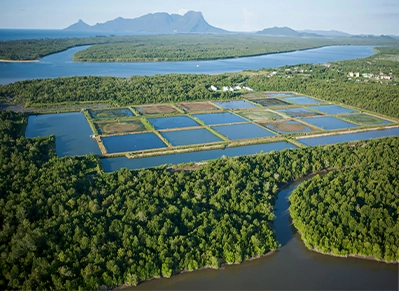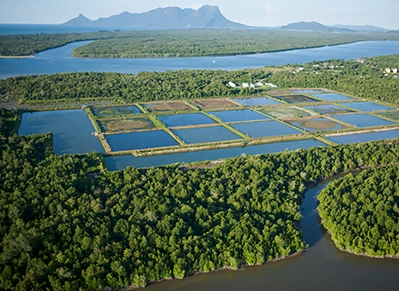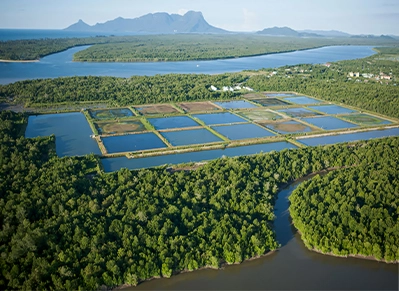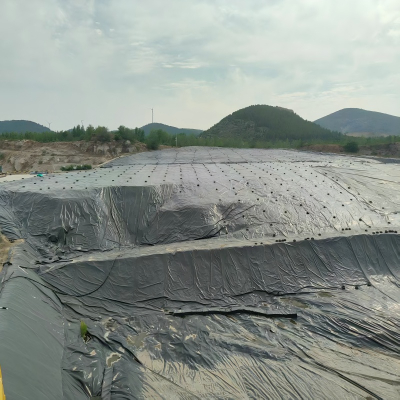Introduction to Composite Drainage Board
Composite Drainage Board is an revolutionary geosynthetic drainage answer that combines high-performance drainage abilities with sturdy structural support. As a 3-dimensional drainage material, Composite Drainage Board efficiently replaces ordinary gravel drainage structures whilst imparting most advantageous water management, decreased development costs, and improved challenge efficiency. The special layout of Composite Drainage Board makes it best for civil engineering, construction, and environmental safety functions the place dependable subsurface drainage is critical.
Material Composition & Structure
The Composite Drainage Board consists of multiple functional layers engineered for optimal performance:
Drainage Core Layer - Typically made from high-density polyethylene (HDPE) or polypropylene (PP) in a corrugated, cuspated, or mesh design to maximize water flow capacity.
Filtration Layer - A non-woven geotextile fabric bonded to one or both sides to prevent soil clogging while allowing water infiltration.
Reinforcement Elements - Some omposite Drainage Board variants include additional reinforcement grids for higher compressive strength in heavy-load applications.
Available Configurations:
Single-sided geotextile (for one-directional drainage)
Double-sided geotextile (for bidirectional drainage)
Heavy-duty versions with enhanced compression resistance
Key Features & Benefits of Composite Drainage Board
(1) Superior Drainage Performance
Composite Drainage Board provides:
High flow capacity (up to 10x faster than gravel systems)
Continuous water pathways through its 3D core structure
Effective pore pressure relief in soil and foundation systems
(2) Space & Weight Savings
Compared to traditional drainage methods:
Composite Drainage Board is 80% lighter than gravel layers
Reduces excavation depth by 30-50%
Enables faster installation with minimal labor
(3) Exceptional Durability
Composite Drainage Board offers:
Long-term UV resistance (when properly covered)
Chemical inertness to soil acids and alkalis
Tear-resistant geotextiles that maintain permeability
(4) Cost Efficiency
By choosing Composite Drainage Board, projects benefit from:
Lower material costs vs. aggregate drainage
Reduced transportation expenses due to lightweight nature
Minimal maintenance requirements over decades of service
(5) Environmental Advantages
Composite Drainage Board contributes to sustainable construction through:
Reduced quarrying of natural aggregates
Recyclable materials in many product variants
Improved water management in green infrastructure
Technical Specifications
Property Test Standard Typical Value
Thickness ASTM D5199 8mm - 30mm
Water Flow Capacity ASTM D4716 0.5 - 5.0 l/m²/s
Tensile Strength ASTM D6637 ≥10 kN/m
Puncture Resistance ASTM D6241 ≥500 N
Compression Strength ASTM D1621 100 - 500 kPa
Geotextile Filtration Rate ASTM D4491 >0.1 cm/s
Primary Applications of Composite Drainage Board
(1) Building & Infrastructure
Foundation drainage: Composite Drainage Board prevents water accumulation under slabs
Retaining wall drainage: Manages hydrostatic pressure behind structures
Tunnel waterproofing systems: Used as a drainage layer behind membranes
(2) Landscaping & Green Roofs
Roof garden drainage: Composite Drainage Board replaces gravel in lightweight systems
Sports field construction: Ensures proper pitch drainage
Planter box drainage: Prevents root rot in urban planting systems
(3) Transportation Engineering
Highway subdrainage: Composite Drainage Board extends pavement life
Railway embankments: Controls groundwater in rail projects
Airfield pavements: Manages subsurface water in runways
(4) Environmental Engineering
Landfill drainage layers: Composite Drainage Board collects leachate efficiently
Mine tailings management: Handles process water drainage
Reservoir liners: Secondary drainage layer in water storage
Installation Guidelines for Composite Drainage Board
(1) Site Preparation
(2) Product Placement
(3) Connection Details
(4) Protection Measures
Why Choose Composite Drainage Board Over Alternatives?
Feature Composite Drainage Board Traditional Gravel Geonets
Installation Speed Fast (mechanized) Slow (manual) Moderate
Material Weight 0.5-2.0 kg/m² 50-100 kg/m² 1.0-3.0 kg/m²
Flow Capacity High Moderate High
Space Requirements Minimal (8-30mm) Significant (300mm+) Moderate (5-10mm)
Long-term Maintenance Low High Moderate
8. Maintenance & Quality Assurance
Composite Drainage Board requires minimal maintenance when properly installed:
Periodic inspections of exposed sections
Flushing of connected pipe systems if needed
Replacement only in cases of mechanical damage
Quality assurance measures include:
Factory production control testing
On-site seam integrity checks
Third-party certification to international standards
Conclusion
Composite Drainage Board represents the cutting-edge general in subsurface water management, combining engineering effectivity with inexpensive performance. Its versatile functions throughout construction, infrastructure, and environmental tasks make Composite Drainage Board an crucial answer for modern-day drainage challenges.
For tasks requiring custom-made Composite Drainage Board specs or technical support, our engineering group offers complete coaching from format thru installation.










